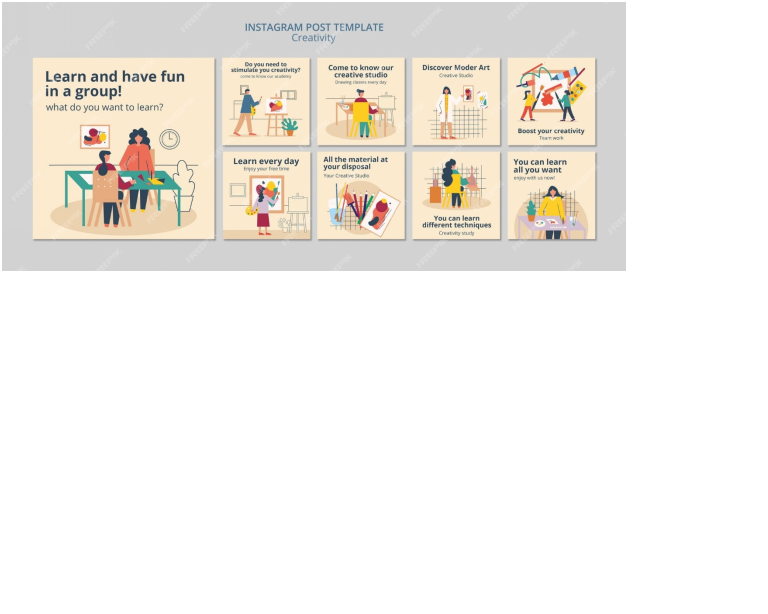Introduction: The Importance of Marketing Materials for Business Growth
In today’s competitive business landscape, having effective marketing materials is essential for the success and growth of any business.
Marketing materials are the tools that help you communicate your brand message, attract potential customers, and build a strong presence in the market. Whether you are a small start-up or an established company, having suitable marketing materials can significantly impact your business outcomes.
Understanding Your Target Audience And Goals
Before you dive into creating marketing materials, you must clearly understand your target audience and your business goals. Your target audience determines your marketing materials’ tone, style, and content. Conduct market research to identify your ideal customers, their needs and preferences, and how you can effectively engage with them. Once you have a solid understanding of your target audience, define your business goals.
Are you looking to increase brand awareness, generate leads, or drive sales? Defining your goals will help you align your marketing materials with your business objectives.
Essential Marketing Materials for Every Business
While the specific marketing materials you need may vary depending on your industry and target audience, there are some essential materials that every business should consider:
1. Brochures
Brochures are versatile marketing tools that provide detailed information about your products or services. They can be distributed at trade shows or even mailed directly to potential customers.
A well-designed brochure showcases your brand, highlight your key offerings, and compels readers to take action. Ensure your brochures are visually appealing, easy to understand, and have a clear call to action.
2. Business cards
Business cards are still one of the most effective ways to leave a lasting impression on potential clients or business partners. They are small, portable, and easily shareable. Your business card should include your logo, contact information, and a brief description of what you do.
Consider adding a QR code that directs people to your website or social media profiles for further engagement.
3. Flyers
Flyers are cost-effective marketing materials that can be distributed in various ways, such as in-store displays, direct mail, or handed out in public spaces. They are great for promoting special offers, events, or new product launches. Design eye-catching flyers that grab attention, clearly convey your message, and encourage people to take action.
Digital Marketing Materials: Website, Social Media Graphics, and Email Templates

In today’s digital age, having a robust online presence is crucial for business success.
Here are some essential digital marketing materials you need:
1. Website
A professional and user-friendly website is the cornerstone of your online presence. It acts as a virtual storefront where potential customers can learn more about your business, browse your products or services, and contact you. Invest in a well-designed website that is responsive, easy to navigate, and optimized for search engines.
2. Social media graphics
Social media platforms are powerful marketing tools that allow you to reach a wider audience and engage with your customers. Create visually appealing graphics that align with your brand identity and resonate with your target audience. Use platforms like Canva or Adobe Spark to design eye-catching social media posts, cover photos, and banners.
3. Email templates
Email marketing is an effective way to nurture leads, build customer loyalty, and drive sales. Design professional email templates that are visually appealing and mobile-friendly. Personalize your emails with dynamic content and compelling calls to action to increase engagement and conversions.
Creating Compelling Content for Marketing Materials

No matter what type of marketing materials you choose, the content you include is crucial in capturing the attention and interest of your target audience.
Here are some tips for creating compelling content:
- Know your audience: Tailor your content to meet the needs and preferences of your target audience. Use language and tone that resonate with them and address their pain points.
- Highlight benefits: Focus on your products or services’ benefits rather than just listing features. Explain how your offerings can solve problems or improve your customers’ lives.
- Use storytelling: Incorporate storytelling techniques into your content to make it more engaging and memorable. Tell your brand’s story, share customer success stories, or illustrate how your products have made a difference.
- Keep it concise: People have limited attention spans, so keep your content concise and to the point. Use bullet points, subheadings, and visual elements to break up the text and make it more scannable.
- Include a solid call to action: Every piece of marketing material should have a clear and compelling call to action. Tell your audience what you want them to do next, whether it’s visiting your website, making a purchase, or contacting you for more information.
Designing Visually Appealing Marketing Materials
The visual design of your marketing materials plays a vital role in capturing attention and leaving a lasting impression.
Here are some design tips to consider:
- Consistent branding: Ensure your marketing materials align with your brand identity. Use consistent colors, fonts, and imagery to create a cohesive and recognizable brand presence.
- High-quality images: Incorporate high-quality images that reflect your brand and resonate with your target audience. Avoid using generic stock photos and opt for original or professionally taken images whenever possible.
- Clear hierarchy: Organize your content to guide the reader’s eye and emphasize the most essential information. Use visual hierarchy techniques such as size, color, and spacing to create a clear and logical flow.
- White space: Don’t overcrowd your marketing materials with too much text or images. Leave enough white space to allow the content to breathe and create a visually pleasing layout.
- Typography: Choose fonts that are easy to read and reflect your brand personality. Combine different fonts to create visual interest, keep it consistent, and avoid using too many styles.
Printing and Production Options for Marketing Materials

Once you have created your marketing materials, you must decide how to produce and distribute them.
Here are some printing and production options to consider:
- Professional printing: Consider using professional printing services for high-quality marketing materials. They offer a wide range of printing options, finishes, and paper types to create a polished and professional look.
- In-house printing: You may print your marketing materials in-house if you have the necessary equipment and skills. This option gives you more control over the printing process and allows for quick turnaround times.
- Digital distribution: You can distribute your marketing materials digitally in addition to print materials. This includes sharing PDF versions of brochures or flyers via email or hosting them on your website for download.
- Fulfillment services: If you have a large volume of marketing materials to distribute, consider using fulfillment services. They can handle your materials’ storage, packaging, and shipping, saving you time and effort.
Budgeting for Marketing Materials
Creating and producing marketing materials involves costs, so it’s important to budget accordingly.
Here are some factors to consider when budgeting for marketing materials:
- Quantity: The number of marketing materials you need will impact the overall cost. Determine how many brochures, business cards, or flyers you require based on your target audience and distribution channels.
- Printing and production: Consider the printing and production options that align with your budget. Professional printing services are more expensive than in-house printing but offer higher quality and more customization options.
- Design: If you need to gain design skills in-house, you may need to hire a professional designer to create your marketing materials. Research and compare costs to find a designer that fits within your budget.
- Distribution: Factor in the costs of distributing your marketing materials, such as postage fees, shipping costs, or fulfillment service fees.
- Return on investment: While sticking to your budget is essential, consider your marketing materials’ potential return on investment. Investing in high-quality materials that effectively communicate your brand message can increase brand awareness, customer engagement, and sales.
Measuring the Effectiveness of Your Marketing Materials
To ensure that your marketing materials deliver the desired results, measuring their effectiveness is essential.
Here are some metrics you can track:
- Engagement: Monitor how many people interact with your marketing materials, such as opening an email, clicking on a link, or requesting more information.
- Conversion rate: Measure the percentage of people who take the desired action after engaging with your marketing materials. This could be purchasing, requesting a quote, or signing up for a newsletter.
- Brand awareness: Conduct surveys or use online tools to measure brand awareness before and after distributing your marketing materials—track changes in brand recognition, brand recall, or brand association.
- Customer feedback: Collect customer feedback to gain insights into how your marketing materials are perceived. Ask them about the message’s clarity, the design’s quality, and whether the materials influenced their decision to engage with your business.
- Sales data: Analyze sales data to identify any correlation between the distribution of marketing materials and an increase in sales. Look for patterns or trends that indicate the impact of your materials on customer behavior.
Updating and Refreshing Your Marketing Materials
As your business evolves and grows, updating and refreshing your marketing materials to stay relevant and competitive is essential.
Here are some reasons why you might need to update your materials:
- Rebranding: If you undergo a rebranding process, update all your marketing materials to reflect the new brand identity. This includes logos, colors, fonts, and messaging.
- New products or services: When introducing new products or services, create marketing materials highlighting these offerings and explaining their benefits. Update brochures, flyers, and website content accordingly.
- Changing trends or industry standards: Stay updated with industry trends and standards to ensure that your marketing materials are updated. This includes design trends, technology advancements, or changes in customer preferences.
- Customer feedback: Consider customer feedback and suggestions regarding your marketing materials. If they point out areas for improvement or express confusion about certain aspects, take their feedback into consideration and make necessary updates.
Conclusion: The Power of Well-Designed Marketing Materials for Business Success
In conclusion, having well-designed marketing materials is crucial for the success and growth of any business. Whether it’s print materials or digital assets, your marketing materials are the face of your brand and the tools that help you communicate your message to your target audience.
By understanding your target audience, setting clear goals, and investing in compelling content and visually appealing design, you can create marketing materials that effectively engage your audience, drive customer action, and, ultimately, skyrocket your business. So, take the time to evaluate your marketing materials and make the necessary updates to ensure they are aligned with your brand and goals. Remember, the power of effective marketing materials should always be considered.



